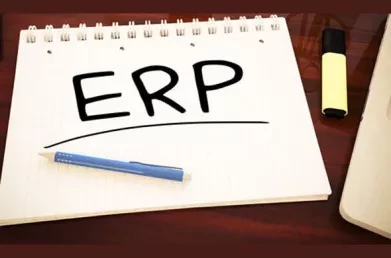How to Drive Continuous Improvement with your Enterprise Applications
Once an Enterprise Business application such as an ERP or a CRM solution has been implemented, how do you ensure that you can drive continuous improvement to realise all the benefits that were identified as part of the business systems strategy and system selection projects? You drive continuous improvement in every other part of your business, so the IT function and the management of enterprise business applications should not be an exception.
Quantitative measurements can be put in place which capture the support issues and Change requests. Using quantitative measures in isolation however does not ensure that you understand the customer’s true perception of the business system and how it is performing against expectations. Also, qualitative measures such as the use of surveys may not get to the real perception of how the system performs or how it is used. Surveys are subjective and the usefulness of the survey can be determined by the questions asked and responses received. A survey may not be asking the right questions.
Over a period of time, a lack of training for the IT team and Business Users is a problem and users don’t understand the capability of the application. The logic and reasoning as to why tasks are carried out in a particular way become less clear to the users of the system – they just do it a particular way because that is the way they were told to do so by the original implementation team. A loss of key personnel with enterprise application knowledge can result in a strategic risk to the business. Functional ownership of the application becomes blurred.
A combination of quantitative, qualitative measures in conjunction with the establishment of a Business and Technology Forum will allow the business to periodically sense-check how users and representatives of the business functions perceive how the applications are performing. A Forum will help the stakeholders to prioritise the issues and changes required. It facilitates knowledge sharing and mitigates the risk of having all the knowledge reside with a few people by extending continued cross-functional involvement in the lifecycle of the enterprise application. A Forum also ensures that the original business project does not revert to being an IT project as there is continuity of involvement and ownership from the business. The Forum provides the opportunity and the platform for helping to drive Continuous Improvement across your enterprise applications.
In Summary:
- There should be clear ownership of the business and the IT strategy. The IT strategy will help to identify and define the enablers to deliver the business strategy.
- There should be clear technical ownership of the business application. The technical owner is typically a member of the IT team. They are usually responsible for planning and executing the upgrades of the application and the management of the underlying infrastructure.
- There should be clear functional ownership of the application. This role is absolutely key and is probably the hardest person to identify by name as time moves on from the initial implementation. The functional owner is responsible for understanding and defining the full requirements of the business function. They are required to understand the current and future capabilities of the application to meet the needs of the business. They will typically be responsible for testing and signing off the application. You may have more than one functional owner depending on the scale and reach of the enterprise application within the business. In the case of an ERP application in a large organisation, you may have a different functional owner for each business function.
- The establishment of a Business and Technology Forum, which meets regularly at agreed intervals, will allow representatives of the business functions to meet to understand the performance of the current service using established quantitative and qualitative key performance indicators. The forum should also identify, prioritise, and drive continuous improvements through the lifetime of the relevant Business Applications.
This blog was written by Justin May, Principal Consultant at Lumenia. For further information on Lumenia or on Continuous Improvement please send an email to Justin May.


